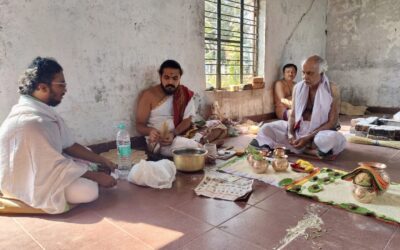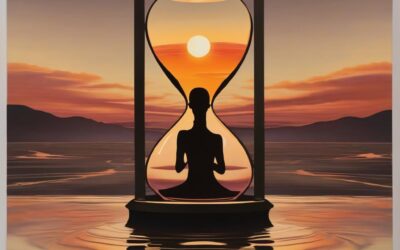The Mahakumbh Mela, one of the largest gatherings of people for religious purposes worldwide, has just concluded in Prayagraj, Uttar Pradesh. The Kumbh Mela takes place every 12 years by rotation at four locations—at Haridwar, on the banks of the Ganga River…

Look far ahead
Look far ahead
Since last month, I have been reading a rather scholarly book, The Book of Why, written by Israeli-American computer scientist Judea Pearl with Dana Mackenzie. The book deals with the often elusive relationship between cause and effect. Judea Pearl is the father of journalist Daniel Pearl, working for The Wall Street Journal, who was kidnapped and murdered by terrorists in Pakistan in January 2002.
One of the pioneers of Bayesian networks and the probabilistic approach to artificial intelligence, Judea Pearl, now 87 years old, argues in the book that while the traditional statistical approach was crucial, it has limitations and that understanding causality requires new frameworks and tools. He moots a “causal revolution” and seeks to establish causality on a firm scientific basis.
I was intrigued as this confirms the long-held statistical mantra, “correlation is not causation.” Looking for the “why” behind events is typical of Vedic inquisitiveness.
कोहं वा कुत आयातः किं कार्य तु मदीयकम् ।
कस्य पुत्रोऽहमुत्पन्नः केनैव निर्मितोऽधुना ॥
Who am I, where did I come from, and what is my job? Wohom am I brorn to, and by whom am I now created? (Shiva Purana Verse 2.1.7.8).
So, when I read about a professor of computer science and statistics and director of the Cognitive Systems Laboratory at UCLA talking about the pitfalls of relying solely on correlation, I felt proud of my civilisational heritage and saluted the ancient Indians for their profound insights.
The Book of Why delves into causal diagrams, powerful tools that visually represent causal relationships between variables. The book then gradually builds complexity, starting with everyday examples like diagnosing illness and tackling more challenging scenarios like policy evaluations and social science research.
No doubt, by understanding causality, we can predict, intervene, and ultimately learn from the world around us. This knowledge is crucial in various fields, from medicine and economics to artificial intelligence and law. However, the book’s impact extends beyond scientific inquiry. Causal thinking is highly beneficial in everyday life, enabling us to make better decisions, navigate complex situations, and understand the nuances of human behaviour.
I could not stop reimagining the tapestry of Indian history through counterfactuals—several “what ifs” emerged, presenting alternative possibilities about present-day India. While I acknowledge the dangers of historical determinism and oversimplification, counterfactuals can be powerful tools for critical reflection and engagement with the past.
What if the Mauryan empire hadn’t collapsed? What if a unified India, under Ashoka’s descendants, had created a robust bulwark against future invasions? What if the Gupta empire had embraced maritime trade more enthusiastically and integrated Southeast Asia with India? What if the Mughal empire had maintained religious tolerance? Akbar’s policies fostered pluralism until Aurangzeb turned fanatic. What if the British East India Company had never gained a foothold in India? What if India’s independence movement had taken a different path? What if the idea of a separate Muslim nation had not sprouted?
Looking more specifically, what if the Arab invasion of Sind by Mohd. bin Qasim had failed? What if Rana Sanga had defeated Babur? What if Dara Shukoh had succeeded Shah Jehan and not Aurangzeb? What if the Marathas had won against the English? What if the revolt of 1857 had succeeded? What if World War II had ended differently? What if Netaji Subhas Chandra Bose had returned? What if the partition had never happened? What if communist China had not swallowed Tibet? You and I would be living in a different country and, of course, a different world.
So, what next? Generative Artificial Intelligence is the new reality of our lives. It is foolish to imagine that it would be business as usual. Not only livelihoods but lives themselves are in for a transformation. Every sector is changing, and it is time to examine the counterfactuals not as some distant events in the future but in everyday life. What if I do not fix my unhealthy lifestyle, invest my savings, resist the corruption and criminality in public life, and provide children with relevant education? Reimagining the future with AI is indeed embracing AI now for good.
As AI evolves, which it is by the day, its ability to analyse vast data and predict trends opens a fascinating door to exploring “what ifs.” Counterfactuals, as thought experiments that ponder alternative outcomes, become increasingly relevant in navigating the complex implications of AI development. I can see five changes happening already. Their force and speed may differ in different societies, but no world region remains untouched.
1. Foresight and Risk Mitigation: Large datasets are available for every activity – from how many calories you eat, how many steps you walk, why you eat, to what is happening around you; identifying patterns is easy. Counterfactuals can act as a safety net, prompting us to consider alternative scenarios, saving us from imminent pitfalls, and helping us identify weaknesses and design more robust solutions.
2. Ethical Decision-making: AI algorithms learn from data, which can perpetuate biases and lead to discriminatory outcomes. The most significant bias in life is the feeling of “I-ness”. We embrace a lot of nonsense from our attachments and miss out on great benefits due to our aversions. Counterfactuals can play a crucial role in uncovering and mitigating these biases.
3. Policy and Planning: AI helps us understand complex systems and predict future trends, from climate change to economic forecasts. Most of the education today needs to be more relevant and functional. What human capital is expected from children spending their formative years in social media trivia and playing video games? What will be the new roles for those stuck up in repetitive jobs that are likely to be taken over by machines?
4. Creativity and Innovation: AI excels at automating routine tasks and analysing data, but it often needs help with genuine creativity. Counterfactuals can stimulate creative thinking by prompting us to consider alternative possibilities and break free from conventional constraints. Counterfactuals created by AI writing tools could prompt the tool to explore different narratives, plot twists, or character choices, ultimately leading to more original and engaging creative outputs.
5. Societal Understanding: As AI increasingly permeates our lives, understanding its societal impact becomes crucial. Counterfactuals can help us assess the potential consequences of income inequality. We ought to be sensitive and kind to the poor and disadvantaged. No person is an island anymore; this must sink in no matter what we do.
Counterfactuals are not prophecies, and making deterministic claims about the future is foolish. However, counterfactuals can be a powerful tool when used critically and responsibly. Your future will depend on what you are doing today. Internalise this shloka in your life:
धर्म चरत, माऽधर्मंम्, सत्यं वदत, नानृतम् ।
दीर्घं पश्यत, मा हृस्वं, परं पश्यत माऽपरम् ॥
Practice righteousness and avoid doing that which is incorrect, speak the truth and refrain from lies, do not live with a narrow vision, look around and be farsighted, and examine yourself and don’t keep looking at others. (Mahabharata 3. 163. 31)
By encouraging us to question assumptions, explore alternatives, and anticipate potential consequences, our daily lives will help us shape an extraordinary future while AI benefits humanity. Know AI as the collected and curated natural intelligence of the entire humanity at your service.
MORE FROM THE BLOG
The Idea of Universal Orthopraxy
The Fabric of the Universe
Nestled in a family and career, it may appear a little unsettling to consider oneself part of a cosmos, primarily unknown. But when this realisation dawns that not only one but everyone else around, and indeed everything, are a mere part of a larger drama that is rolling out…
Eternal, Ephemeral and I
I have always believed in the mystery surrounding this world. As a child, I believed in mythological stories, the stories in my textbooks, and the ones I heard on the radio (Television was not avaiable in homes until the 1970s). Then, when I entered the realm of books, I related to the stories there. Only after enrolling in GB Pant University and living surrounded by scientific institutions did rationality dawn on my consciousness…








